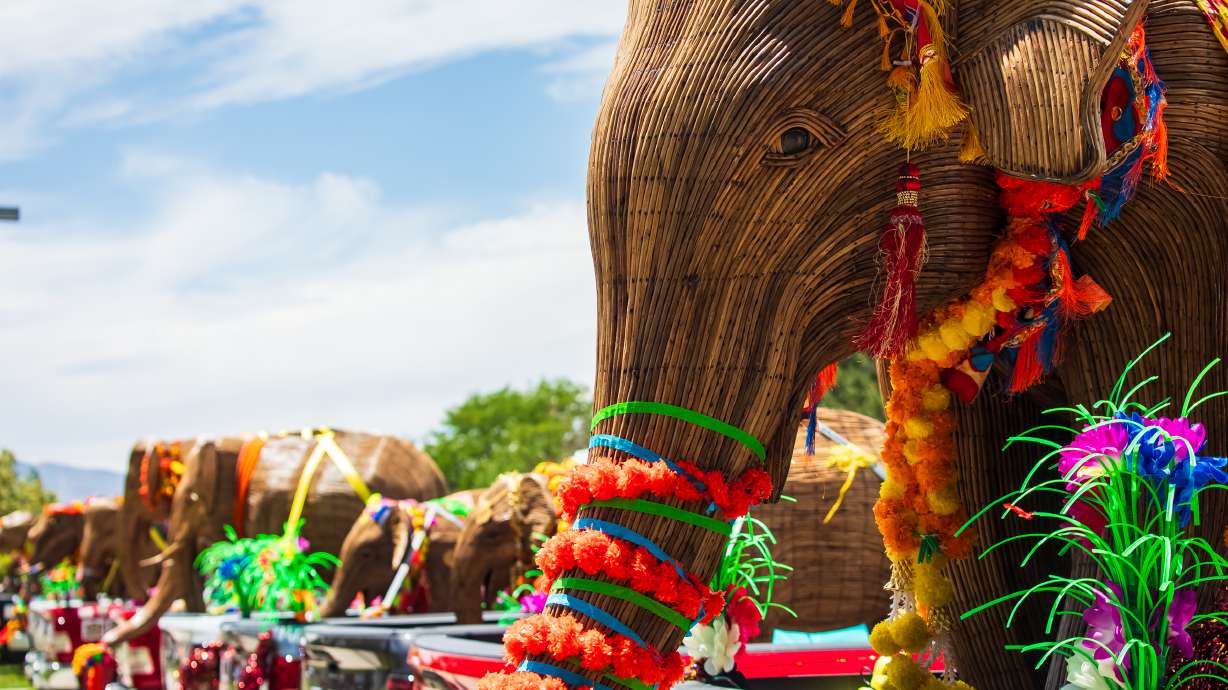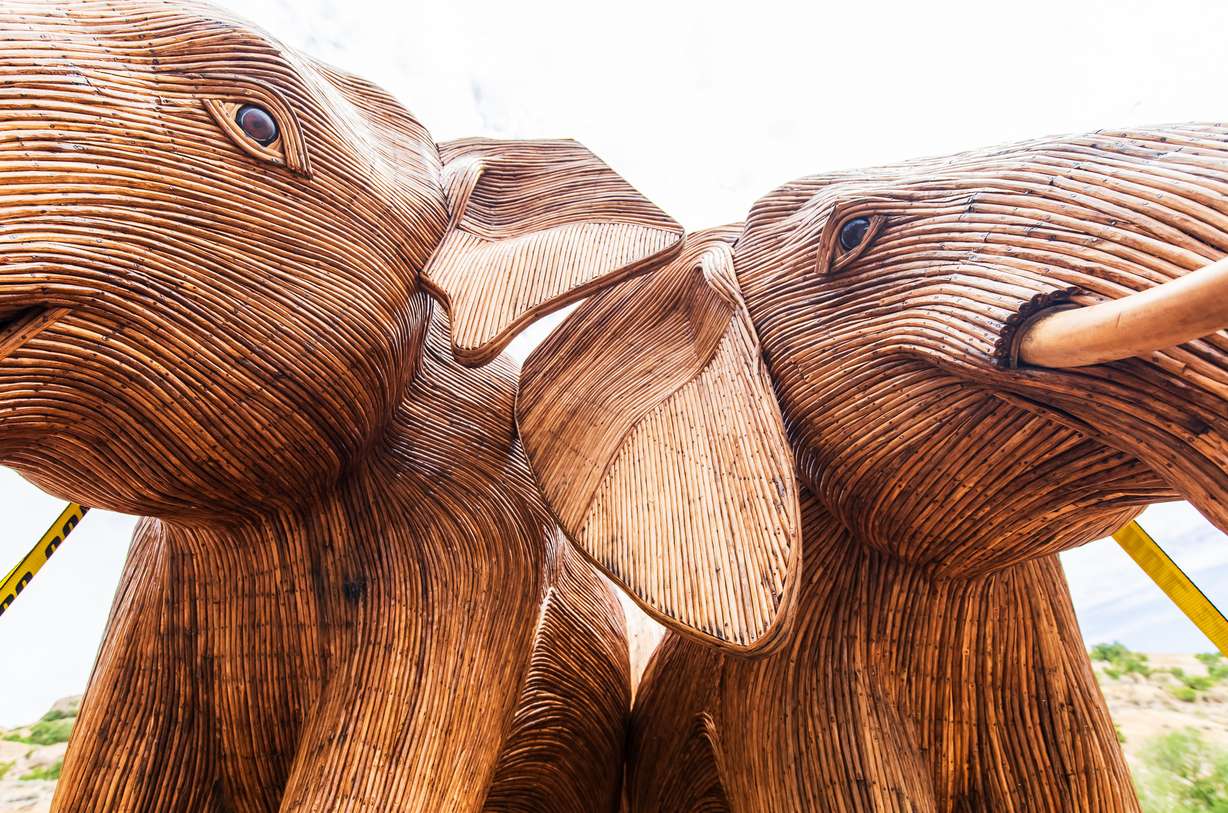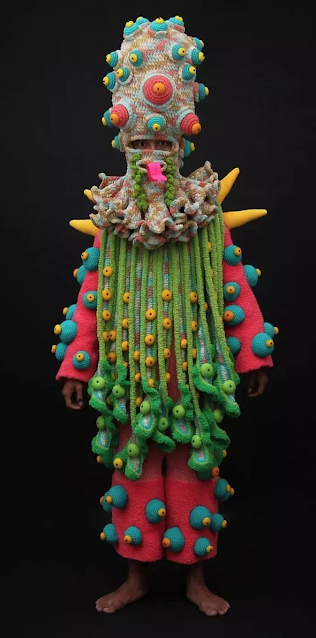Featured
- Get link
- X
- Other Apps
Wait, what? You can buy one?
Why these 100 elephants 'migrated' through Utah
By Carter Williams, KSL.com | UTAH June 24, 2025

An elephant sculpture, part of the Great Elephant Migration exhibit, is displayed on the back of a pickup truck parked at Warm Springs Park in Salt Lake City on Monday. (Carter Williams, KSL.com)
- Life-sized elephant sculptures traveled through Utah Monday as part of a cross-country conservation tour.
- The Great Elephant Migration raises funds for elephant conservation and other causes.
- Artists use invasive Lantana camara to craft elephants, aiding elephant habitat protection.
SALT LAKE CITY — Utahns are used to seeing deer, elk, bison and bears, but a completely different herd passed through the state on Monday.
Several dozen people gathered at Warm Springs Park in Salt Lake City to watch as pickup trucks hauling life-sized elephants pulled in. But they've also been a huge draw on the road as they near the end of a 5,000-mile trek across America.
"People were pointing, cheering (and) hooting at us. Just a lot of goodwill on the road," said Ruth Ganesh, co-founder of the Great Elephant Migration. "I've yet to meet a person ... who doesn't just love elephants. They sort of please tiny children and grandparents alike."
No, these aren't real elephants on parade, even though the sculptures are pretty realistic. They're on tour for a good reason.
All of the elephants are part of the Great Elephant Migration, a cross-country public art installation tour that began in Rhode Island last year to raise money for elephant conservation, the preservation of other species and championing Indigenous causes.
These elephants, Ganesh explains, are based on the likeness of elephants found in the wild. They were handmade by artists in India who wrapped Lantana camara, an invasive weed that threatens elephant habitat in India, around a metal frame, adds Subhash Gautam, who helps lead more than 100 elephant creators.
Gautam hails from a rural, mountainous city in southern India, where elephants are native features on the land. Elephant populations are strong there because of conservation work in the area, but he says Lantana camara has now taken over 40% of India's forests. It's forced more human-elephant interactions in his homeland, leading to more conflicts and negative consequences.
By making each sculpture, artists are able to remove the invasive weed that, in turn, helps protect the real animal.

People can purchase one for $8,000 to $22,000, depending on the size. Money collected by every sale is then divided, going back to the artists who crafted them, as well as elephant conservation programs and also partner conservation groups that protect other animal species, like birds in the Northeast U.S., American bison herds and South American jaguars.
Over 400 have already been sold, raising money for these various causes, Ganesh said. It's also kept artists busy, as they've made more to maintain a rotation of 100 elephants for the public art installation.

However, Gautam believes the project also tackles the need for humans and native animal species to coexist with one another, as human populations grow into native habitats. Elephants are one of many animal species facing this challenge, which is why the tour has highlighted so many other conservation causes.
"I think the whole exhibition and the whole team are trying to understand this theme of coexistence. ... We picked the elephant because it's closest to our hearts," Gautam said. "We've taken the elephant, but to the larger world, the idea is how to coexist. Can we coexist? That's the message we're trying to send across here."
About half of the 100 elephants featured on the tour stopped in Salt Lake City for a short event to celebrate Native American culture. Utah's capital isn't an official exhibit location, but it served as a resting place for the tour as it moved from Jackson Hole, Wyoming to Beverly Hills, California. Others continued the journey without stopping in the city.

Organizers chose Warm Springs Park because of its importance to Native American culture. The park is home to sacred hot springs that face the threat of development around them, which has been an ongoing issue across the West, said Malcolm Lehi, a tribal councilman for the Ute Mountain Ute Tribe.
"It's an important cause when we're talking about our important Indigenous communities across the country," added House Minority Leader Angela Romero, D-Salt Lake City, who also recently became an official cardholder within her native Shoshone-Bannock Tribe.
Monday's event concluded with Native American song and dance performances.
And then, just like that, the elephants returned to the road, traveling to Las Vegas before they reach Beverly Hills, likely delighting more people who see the caravan on the road.
"This journey is just such an emotional journey," Ganesh said. "The energy everyone's given this herd is absolutely infectious, and it just fills everyone up that's behind the wheel."

- Get link
- X
- Other Apps

easy, right? click on older posts
Contact Me


indeed!
a good thing...

Popular Posts
OTIS: Hazel's blog on Thread, Fashion and Costume: Mulyana
- Get link
- X
- Other Apps
Santa is a Monk or a Psychedelic Mushroom?
- Get link
- X
- Other Apps





Comments
Post a Comment
send me your idea!